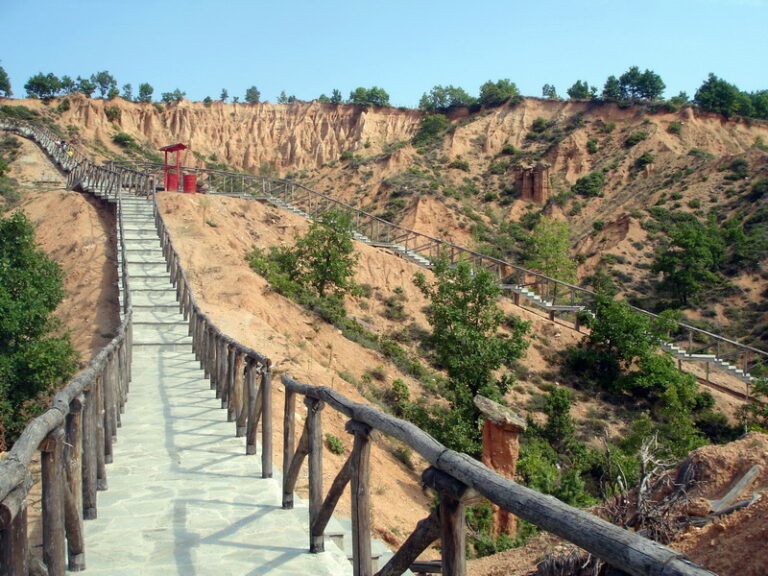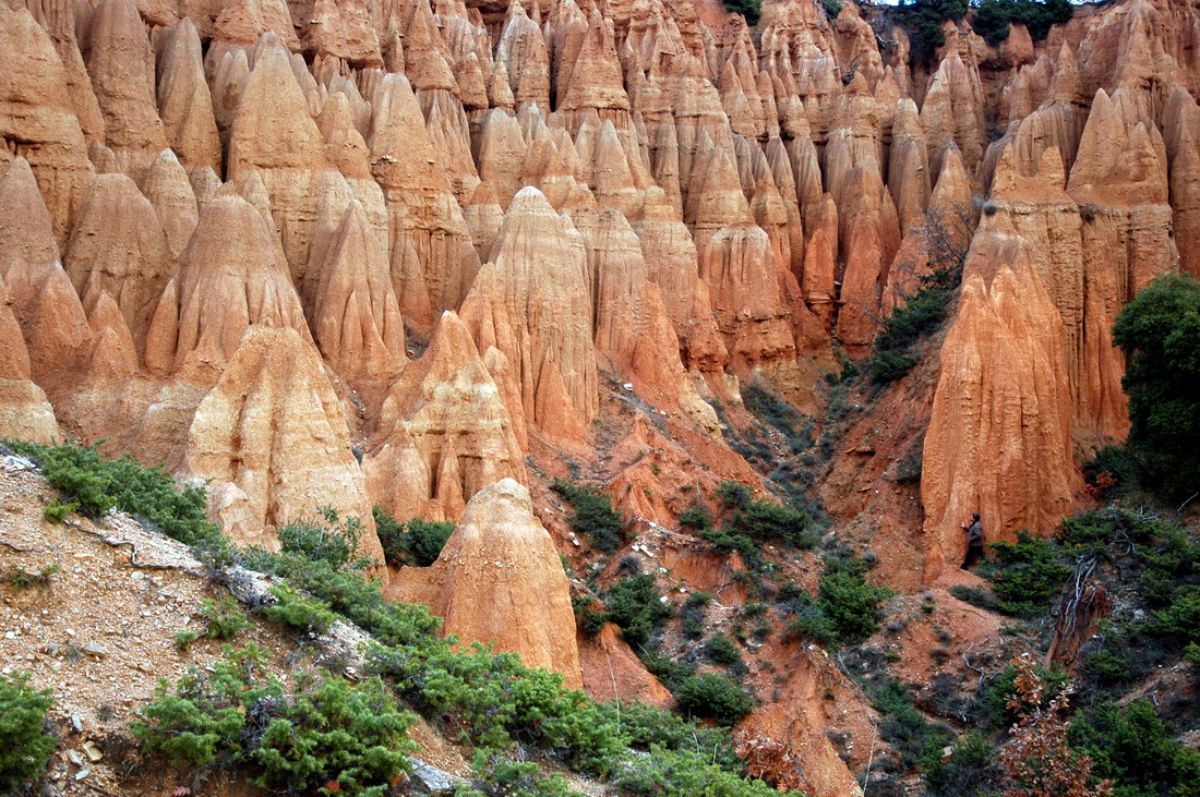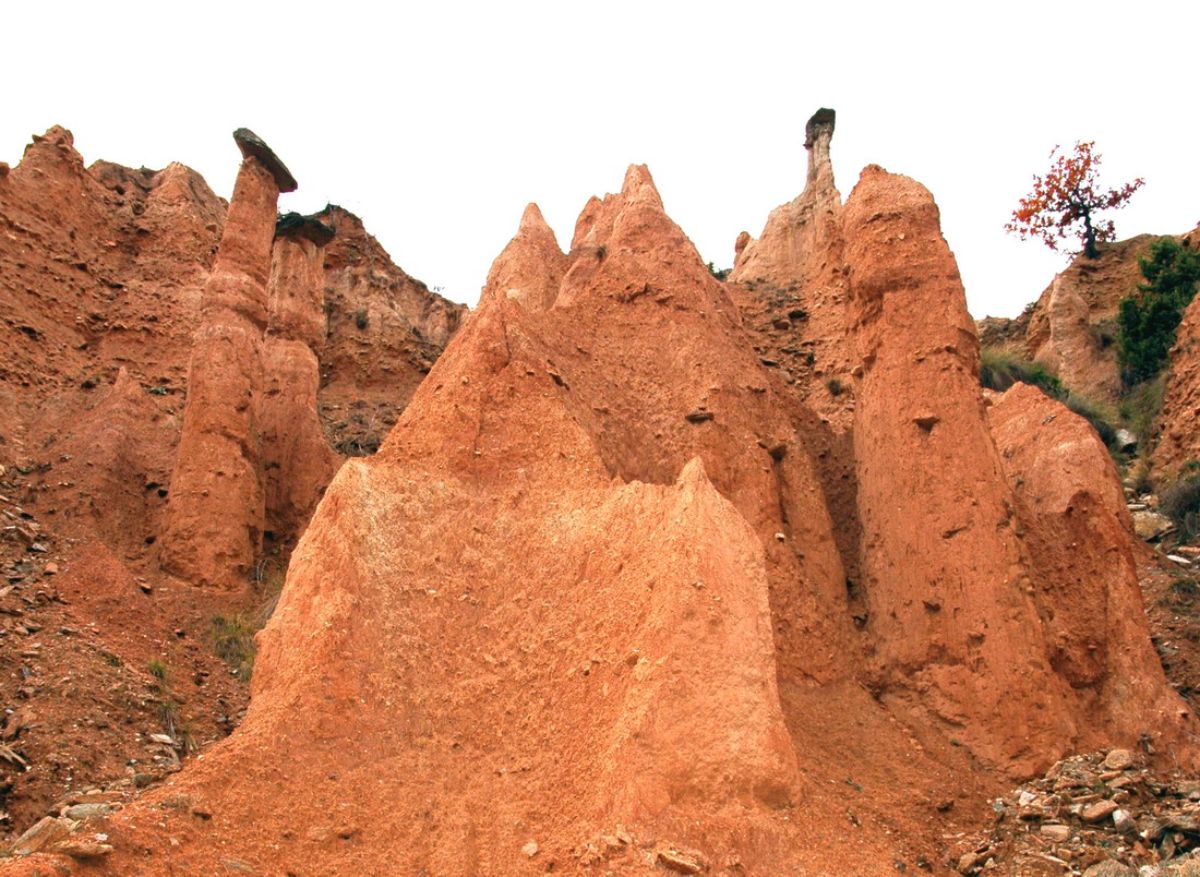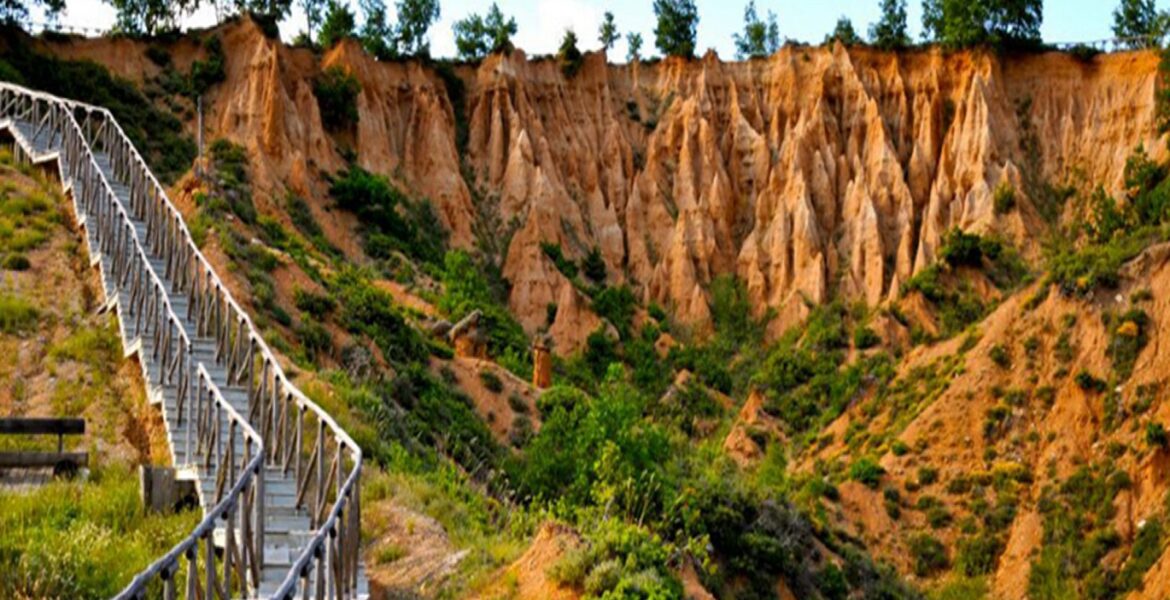In a corner of the Kozani-Grevena geopark, near the village of Mikrovalto in Kozani, there is an otherworldly creation of nature, the like of which has not been found in Greece to date - Boucharia-Nochtaria.
The enigmatic place is located in the centre of a wooded area in the south of the prefecture of Kozani between the settlements of Mikrovalto, Tranovalto and Livadero in the small Kamvounia mountain range.
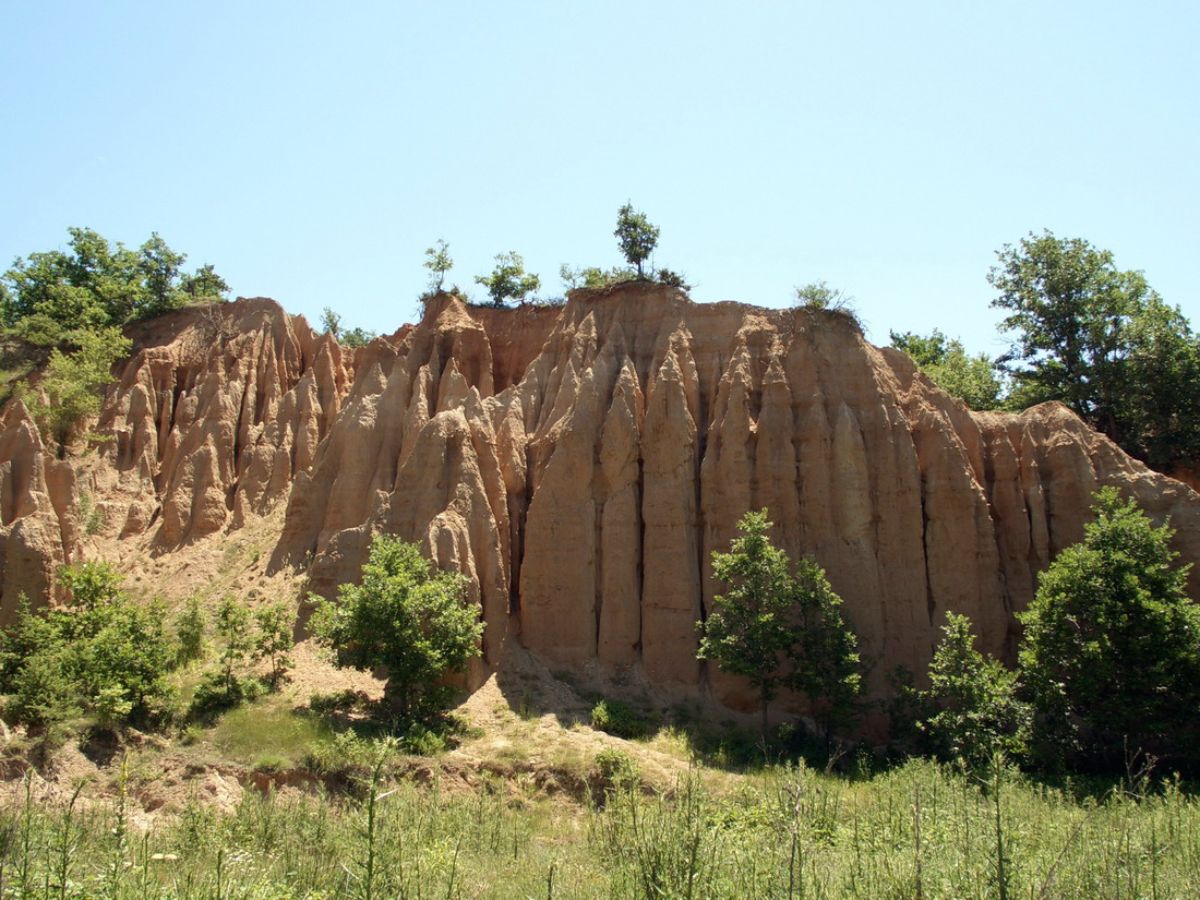
Towering, reddish and slightly conical, the Boucharia are rare for Greek geological standards and is a phenomenon that began in the area almost 70,000 years ago.
For centuries, the continuous erosion of the soil ate little by little the subsoil of the area, leading to the formation of huge earthen deposits that, despite the unstoppable geological changes, did not collapse and remain standing.
With a height of up to 7 metres, these eerie formations are composed of sand, cobbles, marls, clay and an adhesive of iron oxides and silicon dioxide.
Their top is covered by a shale rock, which had the role of an umbrella, reminiscent to a great extent of theoretical "stone mushrooms" or, as it means in the local idiom, chimneys.
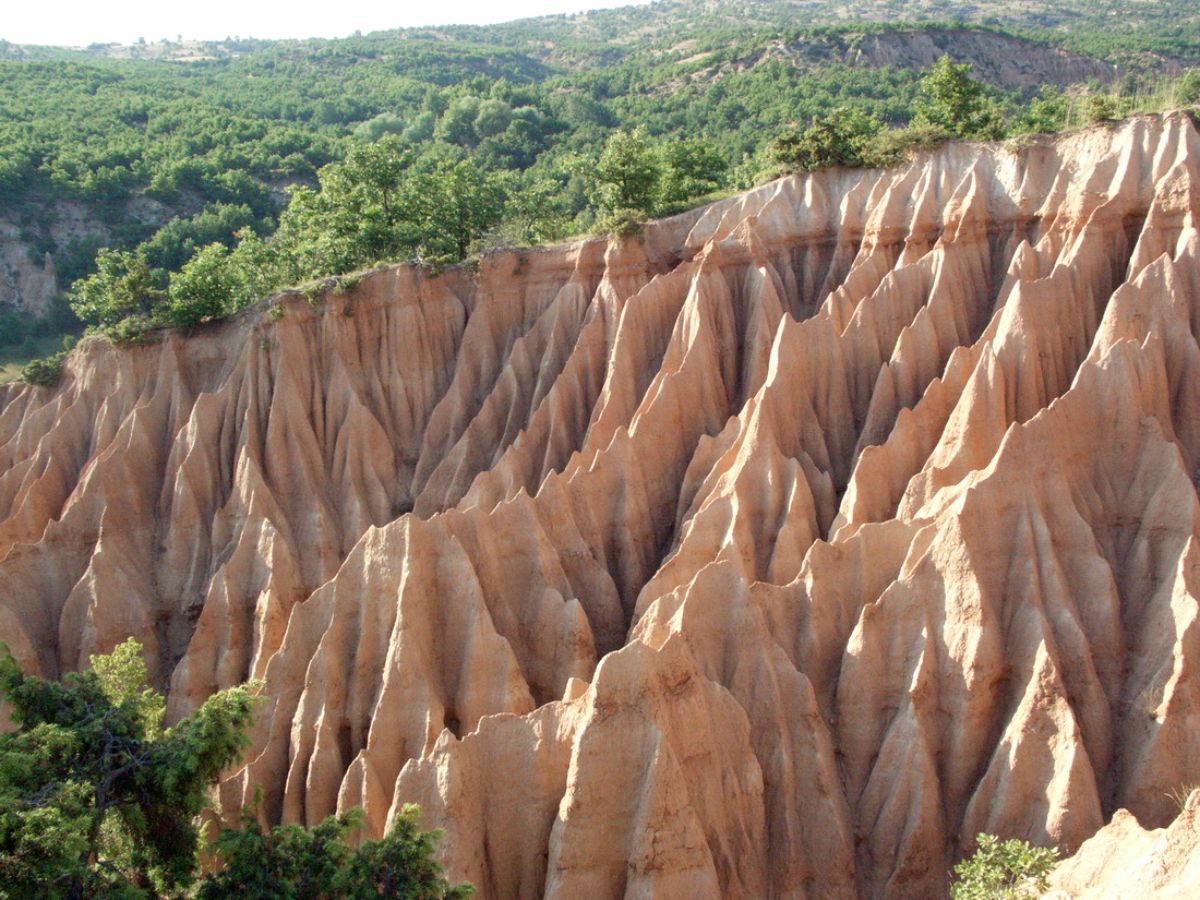
Equally interesting are the neighbouring Nochtaria. At a distance of about one kilometre from Boucharia and through a verdant corridor, Nochtaria emerges, reminiscent of a large extent of the landscapes of Cappadocia.
Nochtaria are impressive conical formations without the characteristic "stone hat" that end in a relatively sharp peak reminiscent of a fine wood cone.
From a geological point of view, Nochtaria and Boucharia present exactly the same geological features, with the only difference being that the former is clearly more numerous with a characteristic thin pyramidal shape.
Obviously, such an alien landscape made people's imaginations run wild. It is no coincidence that the area has been associated with legends and folk beliefs that go beyond human logic, while often in the past, Boucharia and the steep slopes of the area were a place of activity for bandits.
If you ever find yourself in the area in cloudy weather, you immediately have a pervasive sense of eeriness, while the eerie shadows cast by the geological formations at sunset cause you incredible awe.
